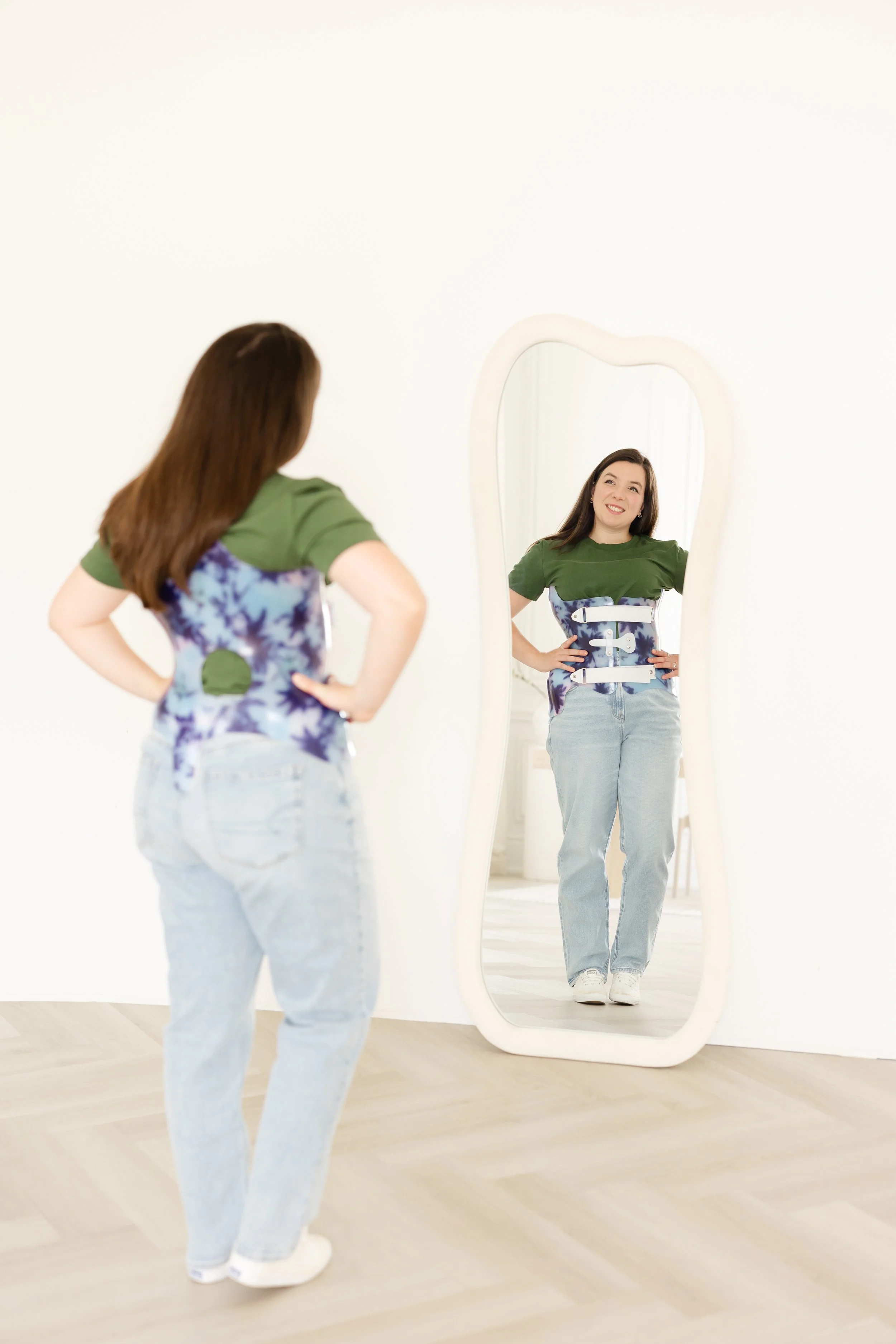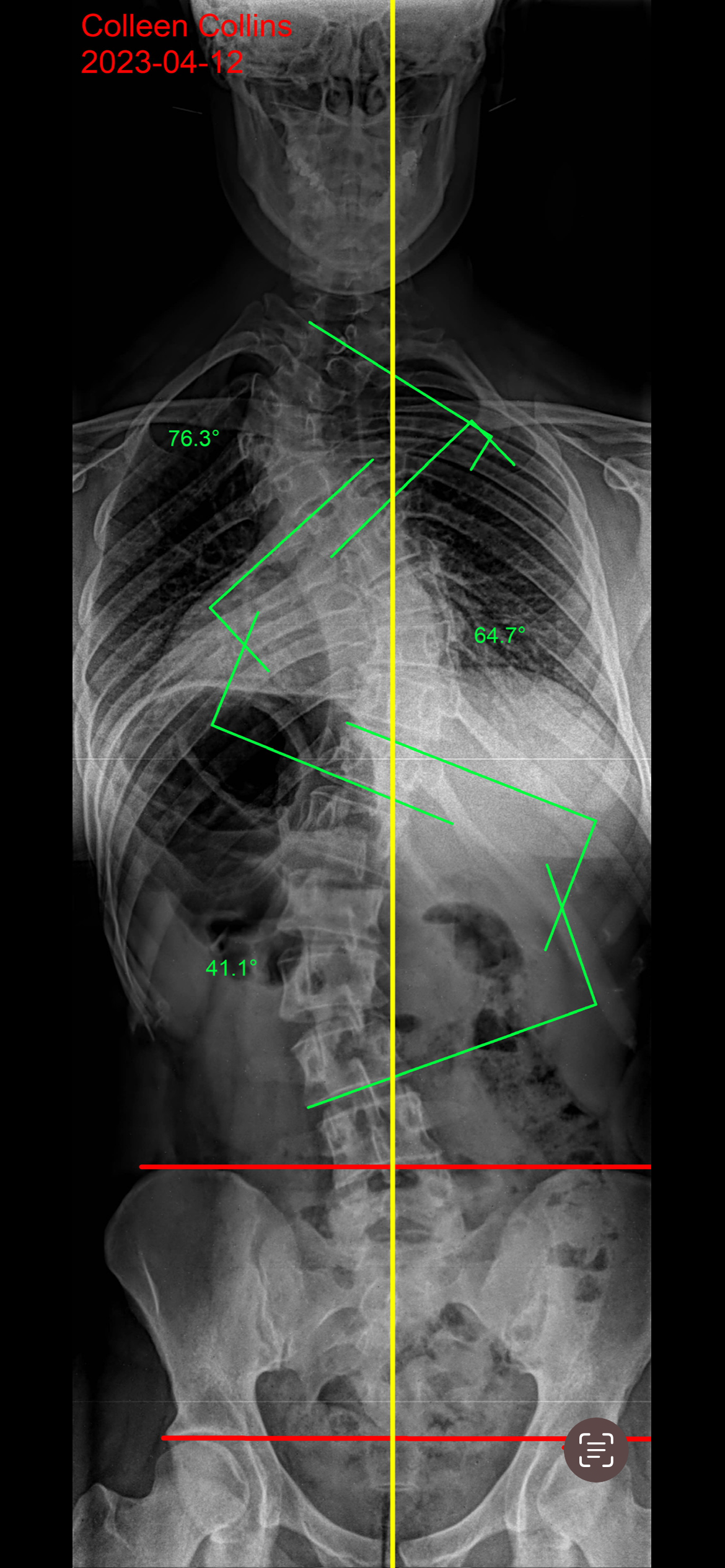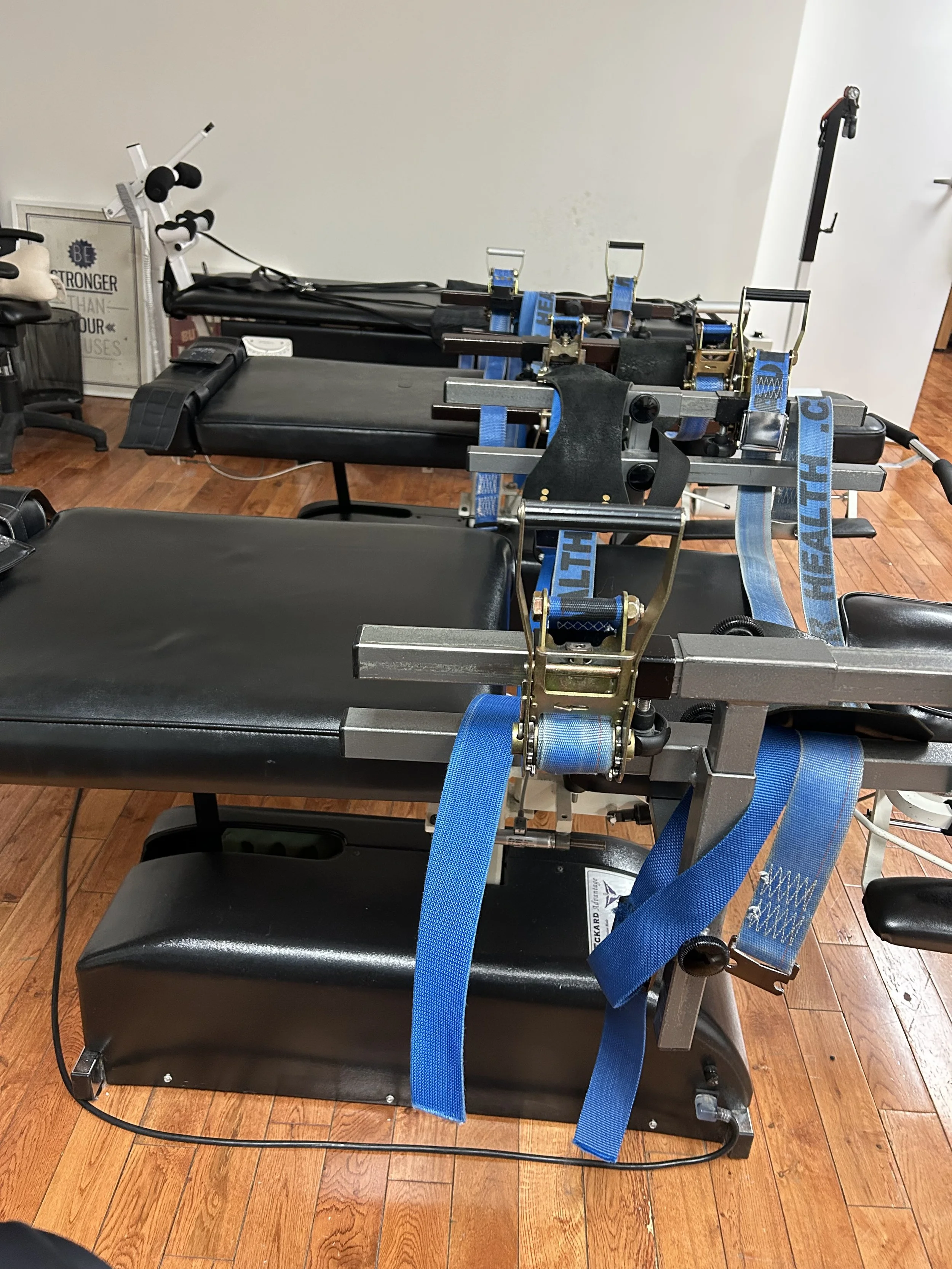
Mental Health Support for Scoliosis
Bent but never broken, helping you overcome the challenges of living with Scoliosis through virtual Mental Health support across Ontario.
Living with scoliosis isn’t just about your back—it can bring stress, anxiety, or worries about how you look and feel. Sometimes it feels like no one really gets what you’re going through.
When these thoughts build up, they can take over—making it harder to feel confident, enjoy school or work, or focus on the things you love.
That’s why I offer scoliosis-informed support. Together, we can work on easing the anxiety, improving how you feel about your body, and finding strategies that make life a little lighter. You don’t have to figure this out alone.
Expert Support
Care from a registered psychotherapist who has firsthand experience with scoliosis and specialized training for the support you deserve.
Body Confidence
Learn to embrace acceptance, celebrating your unique body and developing confidence in your own skin.
Improved Well-Being
Reclaim control of your life and emotions, gaining the tools to handle challenges with greater ease and resilience.
Living with scoliosis can feel like a daily battle.
Since your diagnosis, you’ve been filled with frustration as you struggle to find relief from pain that never seems to go away. You feel isolated when you're unable to participate in activities you once loved, or anxious when you catch a glimpse of your reflection and ashamed of your shape. It’s exhausting to constantly hide how much you're hurting, both physically and emotionally, from those around you.
At STC Therapy, we’re here to help you embrace your body and make peace with your mind.
Does this sound like you?
"I feel angry all the time, like the pain is controlling my mood and my life."
"I find myself obsessing over every curve and trying to hide my body.”
"I’m self-conscious and constantly reminded of how different my body is."
"The thought of bracing or surgery terrifies me—what if it doesn’t work?”
"I’m constantly worried that people will judge me because of how I look or move."
"It’s so frustrating not being able to do things on my own like I used to."
"I feel like nobody understands what I’m going through.”
You’re never alone in this journey.
We can help!
What is scoliosis?
Scoliosis is a condition where the spine curves sideways, often in a C or S shape, and is most commonly found in adolescents. The cause is usually unknown, but it can also result from congenital spine issues or neuromuscular conditions like cerebral palsy.
What are the Symptoms of Scoliosis?
Scoliosis symptoms can look different for everyone. Some people notice changes in how their body looks, while others experience pain or discomfort. Common signs and symptoms include:
Uneven shoulders or hips – one side may look higher than the other.
Visible curve in the spine – the back may appear to lean or twist.
One shoulder blade that sticks out more than the other.
Ribs that stick out on one side when bending forward.
Clothes not fitting evenly – shirts or pant legs may hang differently.
Back pain, muscle fatigue, or stiffness, especially after activity.
In more severe cases, trouble breathing if the curve affects the chest.
Not everyone with scoliosis will feel pain—sometimes the changes are only noticeable in posture or appearance. That’s why early screening and support are so important, especially for kids and teens during growth.
What causes Scoliosis?
Scoliosis can develop for different reasons, and in many cases the exact cause isn’t fully known. This section will also answer the question, what are the different types of scoliosis?
The most common types and causes include:
Idiopathic scoliosis – The most common type, especially in teens. The word idiopathic means the cause is unknown. It’s not due to poor posture or carrying heavy backpacks, but likely involves a mix of genetics and how the spine grows.
Congenital scoliosis – Caused by the spine not forming properly before birth. Some vertebrae may be missing, fused, or shaped differently.
Neuromuscular scoliosis – Linked to conditions that affect the nerves and muscles, such as cerebral palsy, muscular dystrophy, or spinal cord injuries. The muscles can’t properly support the spine, leading it to curve.
Degenerative scoliosis – More common in adults, often due to age-related changes in the spine, such as arthritis, osteoporosis, or disc degeneration.
Secondary causes – Scoliosis can sometimes develop because of tumors, infections, or injuries that affect the spine.
In many cases—especially with adolescent idiopathic scoliosis—there’s no single clear cause, which can be frustrating. What’s important to know is that treatment and support focus less on the “why” and more on managing the curve, reducing pain, and improving quality of life.
What is the Treatment for Scoliosis?
Bracing – Often used for adolescents with moderate curves who are still growing. A brace won’t straighten the spine, but it can prevent the curve from getting worse.
Physical therapy and exercise – Specialized programs, such as Schroth-based exercises, help strengthen muscles, improve posture, and support spinal alignment.
Psychotherapy and mental health support – Living with scoliosis can impact confidence, body image, and anxiety. Therapy helps address the emotional side of scoliosis, building resilience and coping strategies.
Surgery – In severe cases, spinal fusion or other surgical options may be recommended to correct or stabilize the curve. This is usually considered when curves are large or worsening and cause significant issues.
Lifestyle and pain management strategies – Yoga, gentle movement, massage, and pain education can help reduce discomfort and improve daily function.
How Can We Help?
At STC Therapy, I understand that scoliosis and chronic pain affect more than just the body—they impact how you feel, think, and live your daily life. My approach combines evidence-based psychotherapy with scoliosis-informed care to support both the physical and emotional sides of your journey.
Here’s how I can help:
Scoliosis-informed psychotherapy – Learn strategies to manage anxiety, stress, and body image challenges connected to scoliosis or chronic pain.
Pain management techniques – Use approaches like Pain Reprocessing Therapy (PRT), Cognitive Behavioral Therapy (CBT), and mindfulness to retrain the brain and calm the nervous system.
Support for teens and parents – Guidance for young people navigating bracing, surgery, or the social/emotional challenges of scoliosis, as well as support for parents who want to better help their child.
Coaching and goal setting – Build confidence, resilience, and healthy routines so pain or scoliosis doesn’t hold you back from the things you love.
Practical tools and strategies – From stress management to lifestyle adjustments, you’ll leave sessions with actionable steps that make daily life easier.
At STC Therapy, my goal is to help you feel empowered, understood, and supported—not just as someone managing scoliosis or chronic pain, but as a whole person with goals, dreams, and strengths.
Psychotherapy for Scoliosis
Psychotherapy for scoliosis focuses on the emotional side of the condition, helping you manage anxiety, stress, and body image concerns while building coping strategies that support daily life. Through evidence-based approaches like Cognitive Behavioural Therapy (CBT) and mindfulness, therapy can make it easier to handle the ups and downs of scoliosis and feel more in control of your journey.
Coaching for Scoliosis
Created for those that need scoliosis-informed and goal-orientated support or where psychotherapy may be inaccessible. Coaching for scoliosis is about giving you practical tools and encouragement to handle daily challenges while staying focused on your goals. Coaching is action-oriented and helps you build healthy routines, manage stress, and stay motivated.

When it feels like an invisible condition, remember that I see you.
Positive Outcomes of Mental Health Support for Scoliosis
Experience fewer physical and emotional symptoms, making daily life more manageable.
Learn effective tools to cope with pain, anxiety, and stress.
Build confidence in managing scoliosis, boosting your self-esteem.
Enjoy a better quality of life by balancing your physical condition with emotional well-being.
Feel empowered to make decisions that align with your values and goals.
Adapt to challenges and uncertainties with a more flexible mindset.
Embrace and love your body with more self-acceptance.
Grow more confident in social situations and daily activities.
Experience less pain by learning to manage it differently.
Achieve a sense of overall well-being, where your mind and body are in harmony.
We are all unique individuals with unique experiences therefore everyone’s healing journey can look different. With consistent effort and support in the therapeutic journey you can:
About Colleen
“Living with Scoliosis made my teenage years “not normal”. I always tried to hide my scoliosis especially when it came to bracing. I felt so alone and nobody talked about the psychological impact of scoliosis.”
My journey with scoliosis began at 11, but I didn’t let it stop me from competing in figure skating, even making it to the Canadian Nationals in Pairs. Summers were spent in Pennsylvania for intensive scoliosis-specific physiotherapy, and high school brought the challenge of wearing a scolismart suit. Despite these struggles, my passion for sports led me to pursue education in sport psychology, earning a BSc (Hons) in Sports Studies, a Master’s in Sport and Exercise Psychology, and eventually a Master’s in Counselling Psychology to become a Registered Psychotherapist.
STC Therapy was originally created to support athletes dealing with anxiety and the pressures of sports. However, as I delved deeper into the mental health challenges associated with scoliosis, I realized the significant gap in support for those living with this condition. This led me to shift STC Therapy’s focus toward helping individuals navigate the emotional and psychological challenges of scoliosis.
Now, my mission is to bridge the gap between scoliosis and mental health care, providing specialized support so that everyone with scoliosis can live a happy, healthy, and functional life.
STC Therapy is here to create positive and meaningful change in your life, supporting you every step of the way.
How STC Therapy Works
GET TO KNOW US
Start by booking a free 15-minute consultation. If you feel we’re a good fit, we’ll schedule your first appointment to begin your therapeutic journey.
WE GET TO KNOW YOU
We take the time to understand everything that makes you who you are—your experiences, struggles, joys, and what truly matters to you.
START YOUR HEALING JOURNEY
Together, we’ll create a personalized plan for your healing, adapting it as needed to support your growth and mental well-being.
Embrace the curves of life & scoliosis.
To get started, book an appointment with us via our contact form, direct email to info@stctherapy.com, or through our safe online booking by clicking the button below. If you have any questions please fill out the contact form or email us we are happy to help.
STC Therapy offers online therapy across Ontario specializing in mental health support for adults, teens, and children with scoliosis or spinal deformities.
Frequently Asked Questions About Scoliosis Therapy
What is scoliosis?
Scoliosis is a condition characterized by an abnormal lateral curvature of the spine. It can occur at any age but is most commonly diagnosed during adolescence.
What causes scoliosis?
The exact cause of scoliosis is often unknown (idiopathic). However, it can also result from congenital spine deformities, neuromuscular conditions, genetic factors, or degenerative changes in adults.
How is scoliosis diagnosed?
Scoliosis is diagnosed through a physical examination and confirmed with imaging tests, such as X-rays, which help determine the degree of the spinal curvature.
What are the symptoms of scoliosis?
Common symptoms include uneven shoulders, an uneven waist, one hip higher than the other, leaning to one side, and, in severe cases, back pain and difficulty breathing.
Can scoliosis cause pain?
While many cases of scoliosis are painless, some individuals may experience back pain, especially if the curvature is severe or associated with other conditions.
How is scoliosis treated?
Treatment depends on the severity and cause of the curvature. Options include bracing, physical therapy, and surgery. However these are the physical treatments, as a mental health professional STC Therapy treats the anxiety or depression and other challenges that are accompanied with scoliosis.
What is pain reprocessing therapy?
Pain Reprocessing Therapy (PRT) is a psychological treatment approach designed to help individuals manage and reduce chronic pain by retraining their brain's perception of pain signals. It is based on the understanding that chronic pain, especially when it persists without a clear physical cause, can be maintained by neural pathways in the brain that have become overly sensitized.
What are some challenges I can get help with?
STC Therapy can help you overcome the challenges of living with scoliosis and chronic pain such as helping you with body image, body acceptance, pain management, anxiety and depression treatment, social anxiety, and appearance anxiety.
Approaches We Use In Scoliosis Therapy
Cognitive Behavioural Therapy (CBT)
In my therapeutic approach using Cognitive Behavioural Therapy (CBT), I work with clients to identify and challenge negative thought patterns and beliefs that contribute to their emotional distress. By learning how our thoughts influence emotions and behaviours will create more awareness to make meaningful change and help clients develop healthier coping strategies and improve their overall mental well-being.
Acceptance and Commitment Therapy (ACT)
Acceptance and Commitment Therapy (ACT) is an action-oriented psychotherapy approach that evolves from traditional behaviour and cognitive behavioural therapies. In ACT, clients are encouraged to stop avoiding, denying, and struggling with their inner emotions and instead accept these feelings as natural responses to certain situations. This acceptance helps clients move forward in their lives by embracing their hardships and committing to necessary behavioural changes, regardless of their current circumstances or emotional state.
In Pain Reprocessing Therapy (PRT), I help clients understand and reinterpret their pain signals, teaching techniques to shift their perception of pain from a threat to a neutral sensation. This approach aims to reduce the intensity and impact of chronic pain by retraining the brain's response to pain signals.













